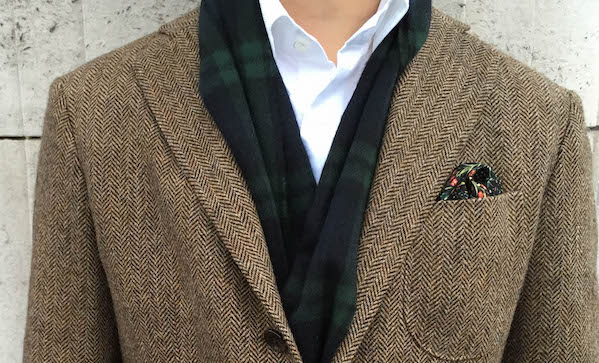Dressing for winter is tough in Canada. Suiting up for winter is even tougher. Sure, you could layer up your existing formal wear with sweaters and base layers, but you’d be a hot mess by the time you hit the boardroom. There’s a simpler way—invest in a two-piece tailor-made for combating the cold. Here’s how to find the right winter suit for you, starting with the perfect fabric.
The classic: Wool
Versatile wool’s breathability and, if you’d believe it, water-repellent properties secure it a place in a man’s closet year-round. However, finding one worthy of winter is a bit of a numbers game. You’ll have to ask for a warmer fabric weighing in the 16-20 ounce range. You’ll also have to consider its fineness: the average wool fabric commands an 80-twist rating, while high-twist Super 120 represents very fine cloth. It’s more luxurious, but the higher quality fabric is tougher to care for. The upside is that most wool suits can be maintained with a suit brush and a bit of airing out. Oh, and invest in a cedar closet or hangers. You’ll thank us. The moths will not.
The tough one: Tweed
Tweed, a heavier type of wool, has been favoured as a cold weather suiting staple for its warmth and tough-as-nails durability since the turn of the century, when it was heavy and itchy to boot. Today’s tweed is slimmer and can be as soft and breathable as a velvety sweater, but no less warm. English tradition dictates brown and grey as top colour choices, though blues and shades of wine offer a sportier, modern look. A muted palette looks great in patterns such as herringbone or tartan check, but even your most basic Donegal tweed features a naturally heathered look for a bit of added interest. Pair a tweed suit with other tough fabrics such as chambray or flannel to dress it down.
The winter armour: Flannel
Flannel, bar none, is the heaviest type of wool out there. It was practically invented to protect from the elements, meaning you can pretty much forget the coat at home when you’re wearing a suit made of it. Unlike tweed, however, flannel has a reputation for being as luxe as it is substantial. Flannel suits effuse a slightly felted sheen and possess surprising softness. That’s not to say flannel’s not rugged—in fact, it’s got a lot in common with denim, which will conform to your body over time. You’ll have to steam your suits to return them to a more boardroom-ready shape. For smells like woodsmoke (which flannel readily absorbs), you’ll have to dry clean.
For the high roller: Cashmere
Cashmere suits are the most luxurious of the bunch. The wool (or technically, goat hair) makes for an extremely lightweight and profoundly warm garment, but carries the drawback of being harder to maintain. In fact, dry cleaning is largely out of the question for pure cashmere—you’ll have to hand wash it in warm water using gentle soap or cashmere cleanser, then lay it out to dry without wringing it. A weightier cashmere-wool blend drapes better over the body and enjoys an added measure of sturdiness. We suggest showing off your investment with wide windowpane checks or chalk stripes.
Your weekend suit: Corduroy
This dense yet velvety fabric is exceptionally warm and won’t hamper your movement due to its flexibility. However, while it may be known as the “fabric of kings,” it’s best worn outside office hours. Not that that’s an issue. The weekend’s perfect for rebellious details such as an unstructured fit, soft shoulders and a splash of colour (hunter green, mustard and ruddy browns if you’re feeling bold). We encourage wearing each piece of a corduroy suit separately for maximum versatility. That’ll save you some cash when winter transitions into spring.
Nicholas Mizera is a lover of menswear, craft beer and lifestyle mags. Some know him as The Gentleman Journalist.
Flickr.


